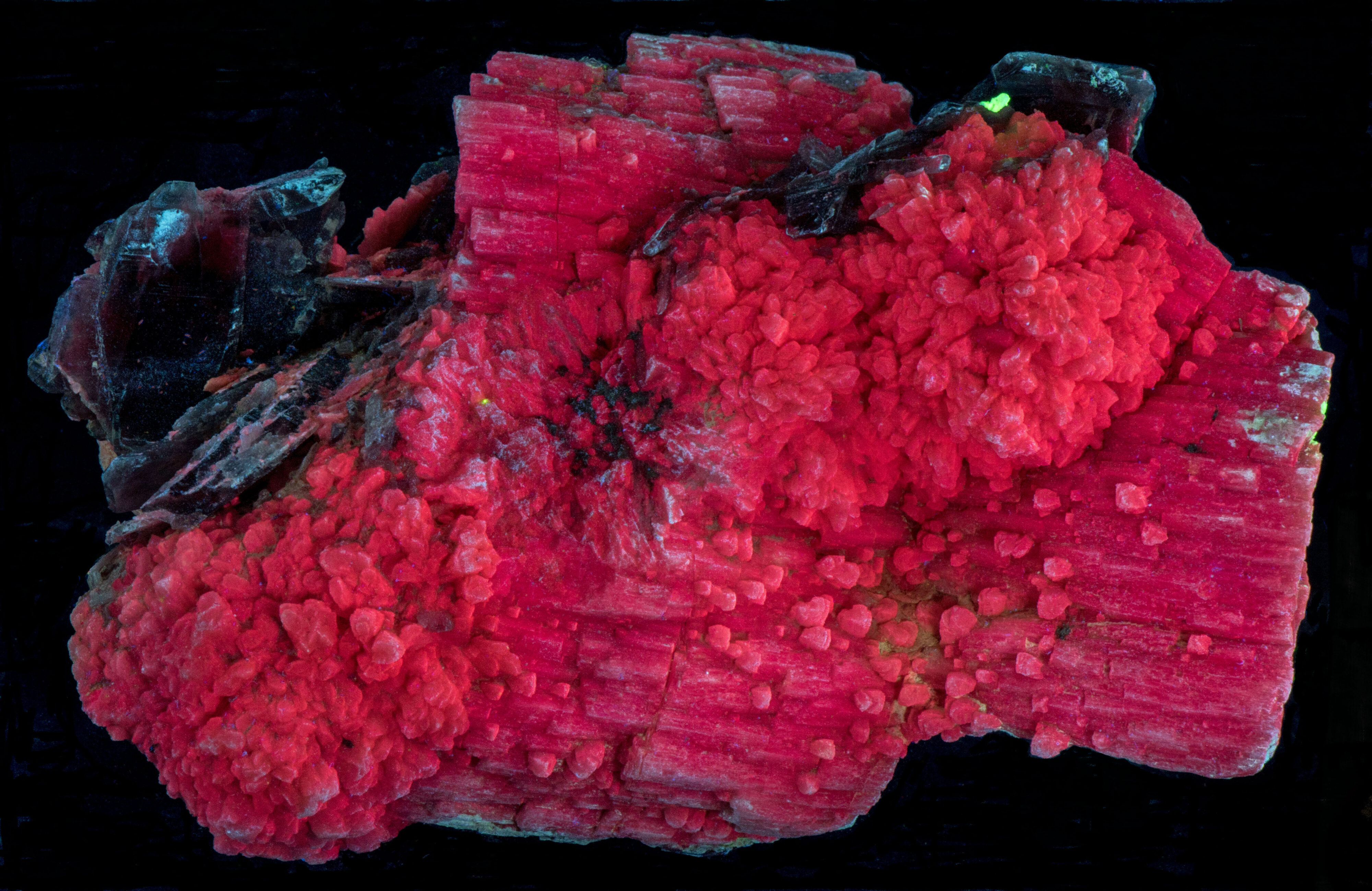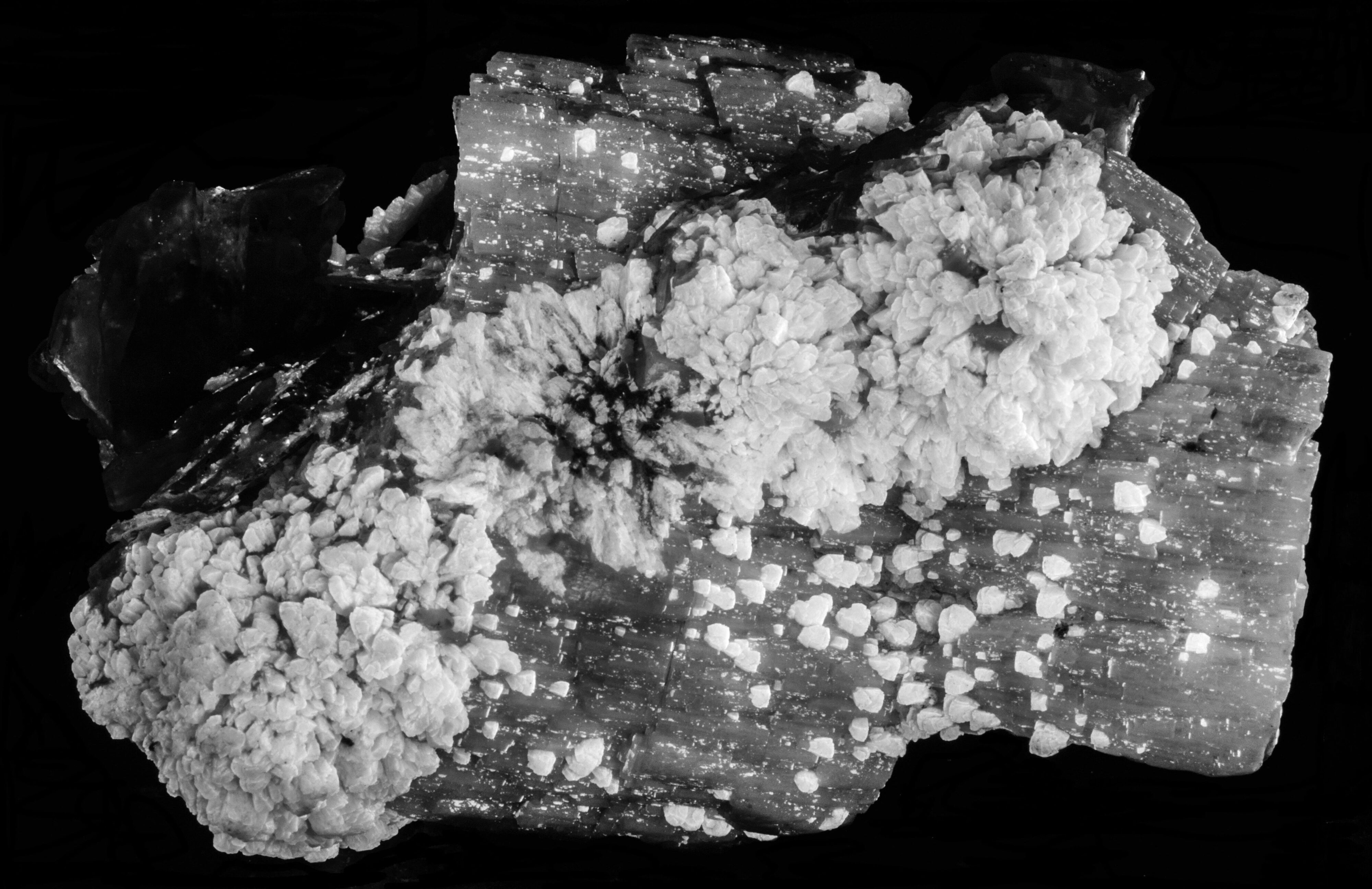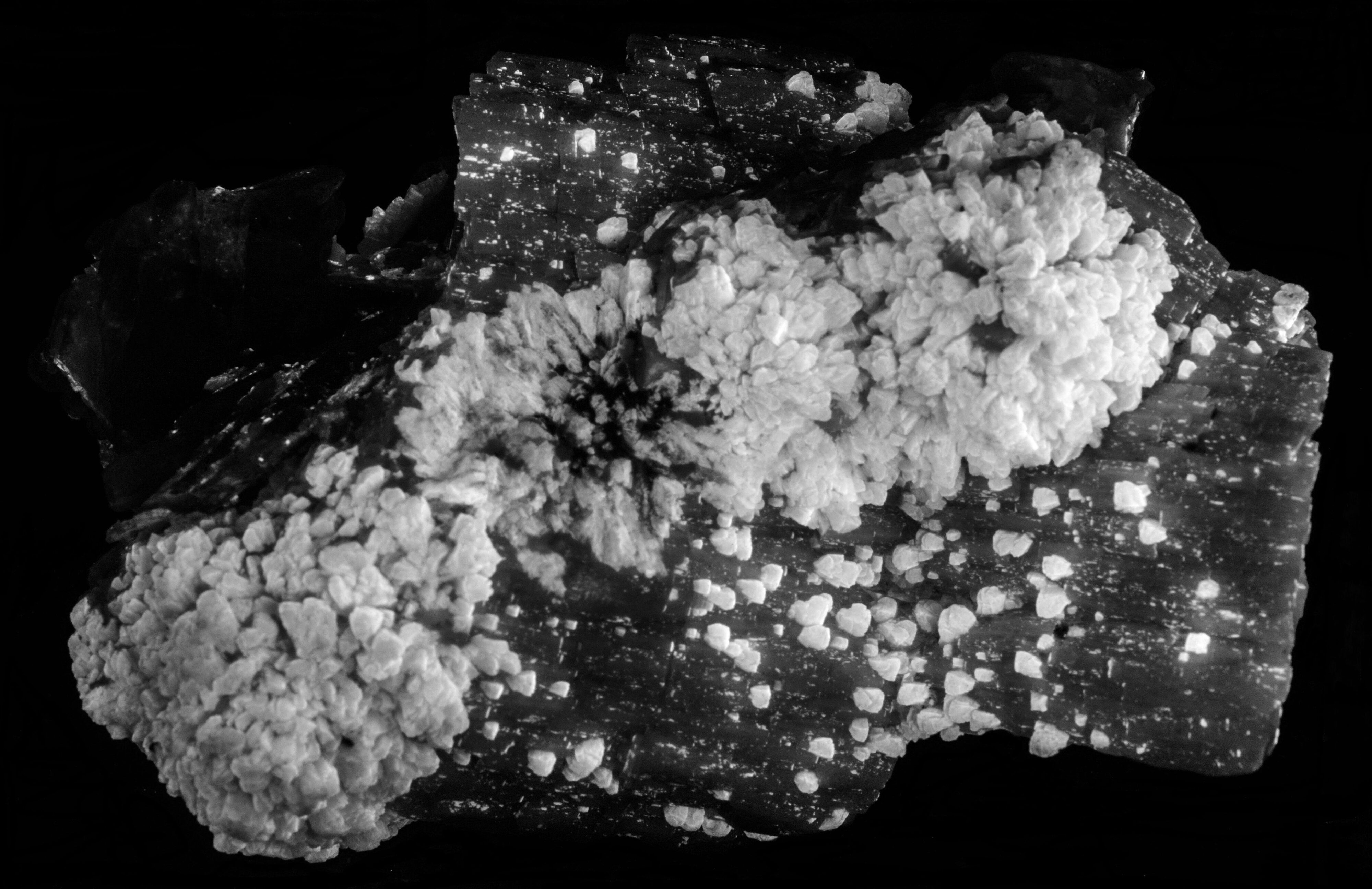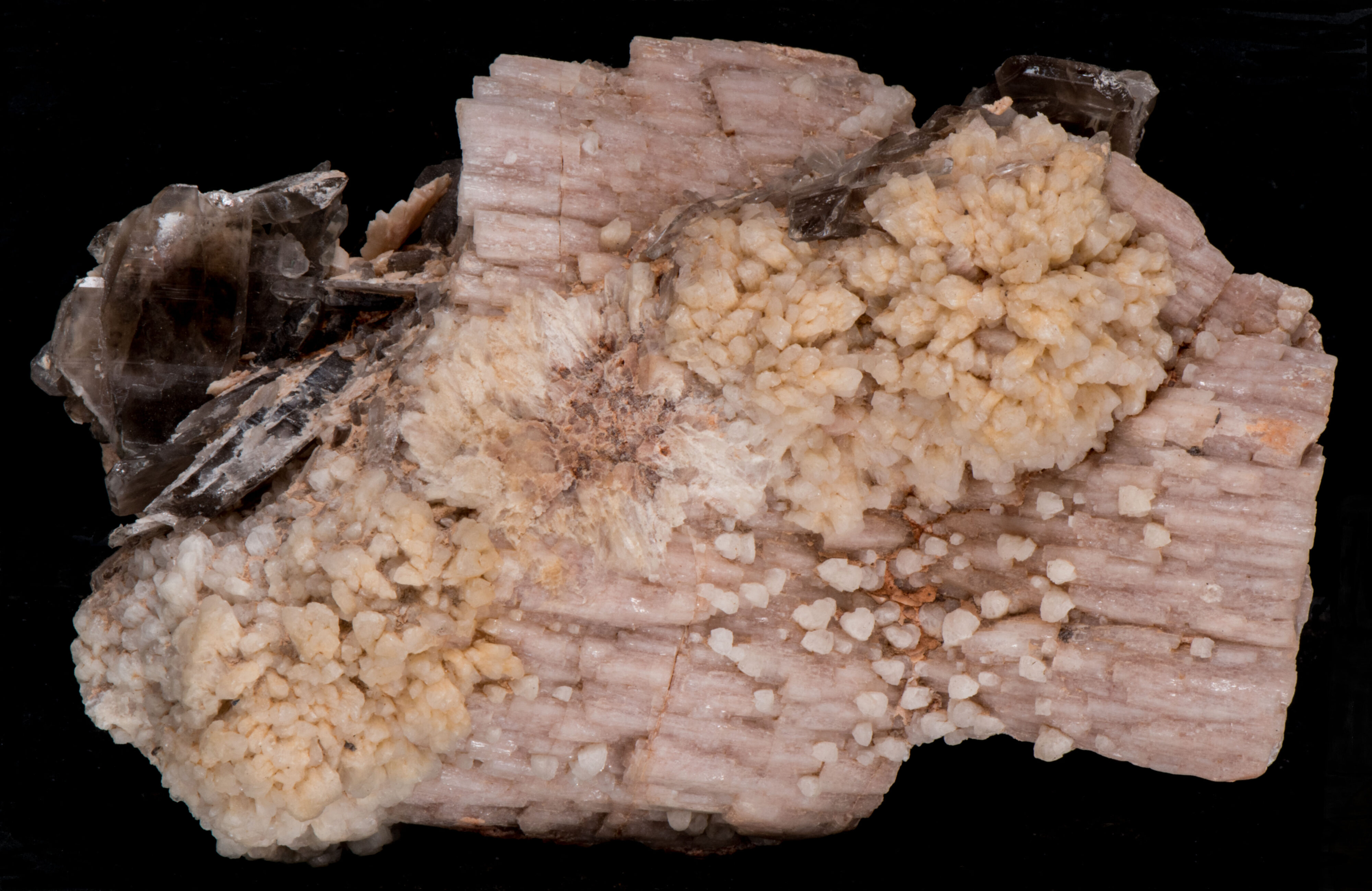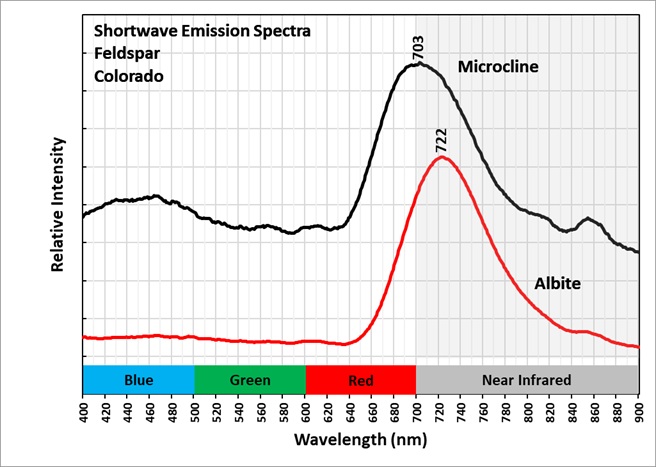Two Feldspars from Colorado
Contributed by: Michael Crawford
Date: Jul 31st, 2025
Locality: Florissant Area, Florissant (Topaz Butte), Teller County, Colorado, USA (See on Mindat)
Size: 9 x 13.5 cm
Description:
This specimen has two generations of alkali feldspar. It is from Qui-Buc Claims, Florissant Area, Teller County, Colorado. Pink parallel lathes of microcline (K(AlSi3O8)) crystals were the first generation. Albite (Na(AlSi3O8)) crystals formed on top of the microcline. The feldspars fluoresce red under shortwave UV illumination and are non-fluorescent under longwave and midwave UV light. Non-fluorescent smokey quartz is also present.
The two feldspars can be distinguished by their different crystal habits, but the red fluorescence in the shortwave image is the same. The red fluorescence in both feldspars is activated by ferric iron (Fe3+) replacing aluminum (Al3+). The shortwave emission spectra are different for the two feldspars. Microcline emission peaks at 703 nm and albite peaks in the near infrared at 722 nm. Many microcline specimens have an emission peak around 680 nm and this microcline may have an intermediate composition (sanidine) between the alkali feldspar endmembers of microcline and albite. This difference can be seen in images of the near infrared fluorescence. The image taken with a 720 nm bandpass filter shows that the albite fluorescence is much brighter at this wavelength. The image taken with an 850 nm cutoff filter shows greater contrast between the albite and microcline. At this longer wavelength, only the albite is still fluorescent.
The color infrared image is composed of green and red visible bands and a near infrared band. The 850 nm cutoff image was used for the near infrared because it has the greatest contrast for discriminating the feldspars. The microcline image appears green and albite appears yellow.
Summary of luminescence responses:
Albite (Mindat) (RRUFF)
- Fluorescence under Shortwave (255nm LED) UV light: Red
- Fluorescence under Shortwave (255nm LED) UV light: Red


